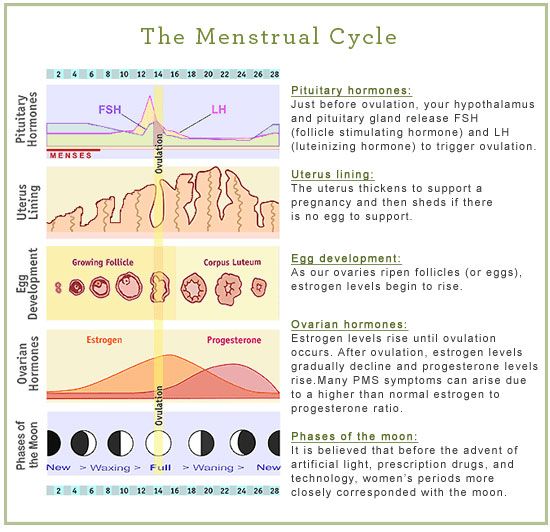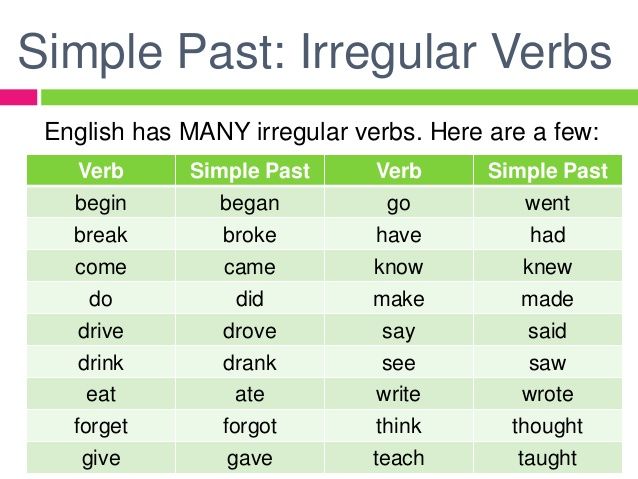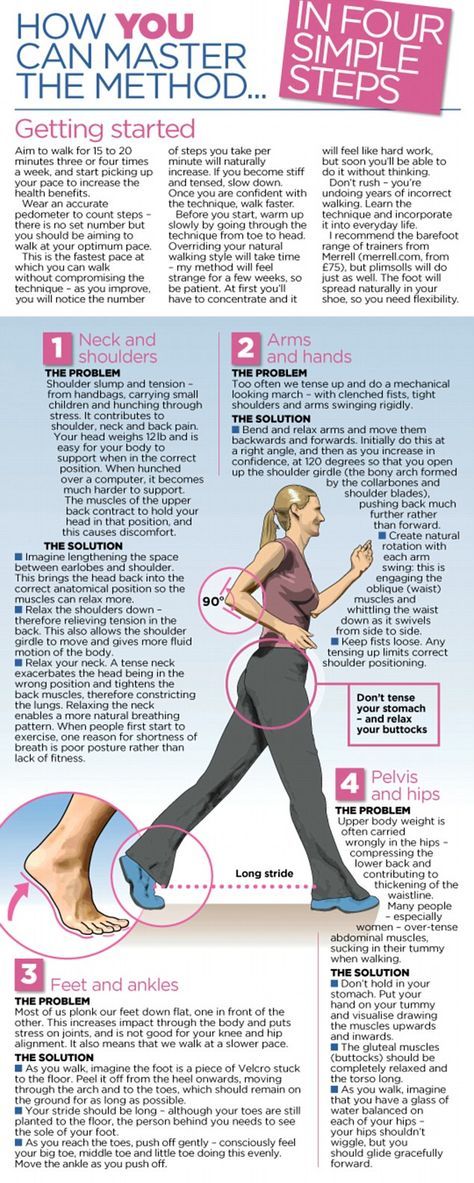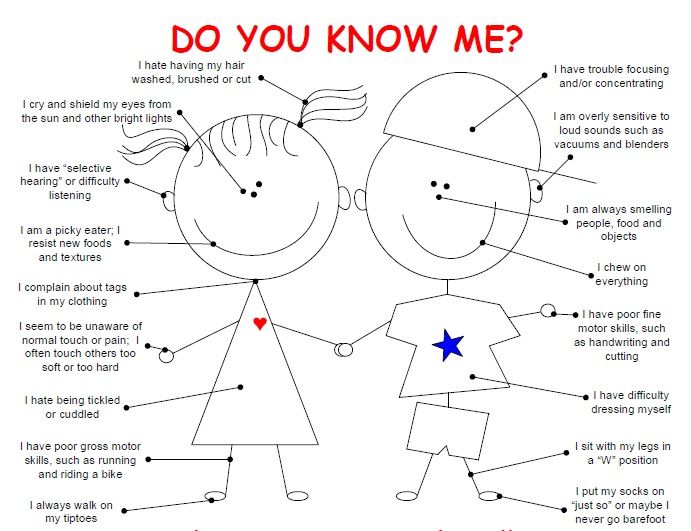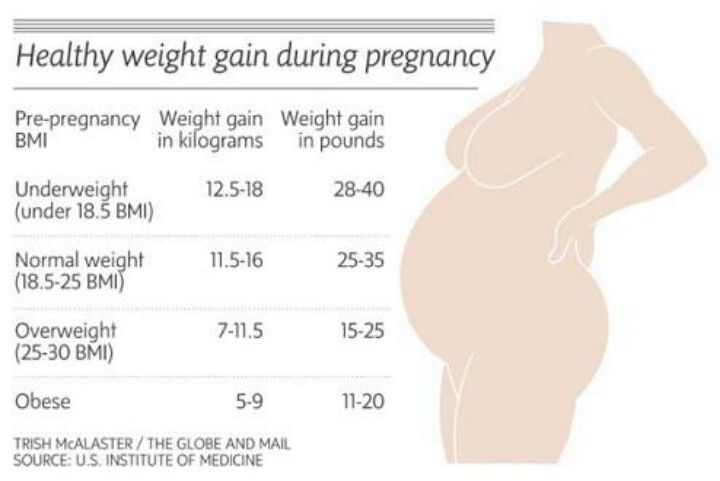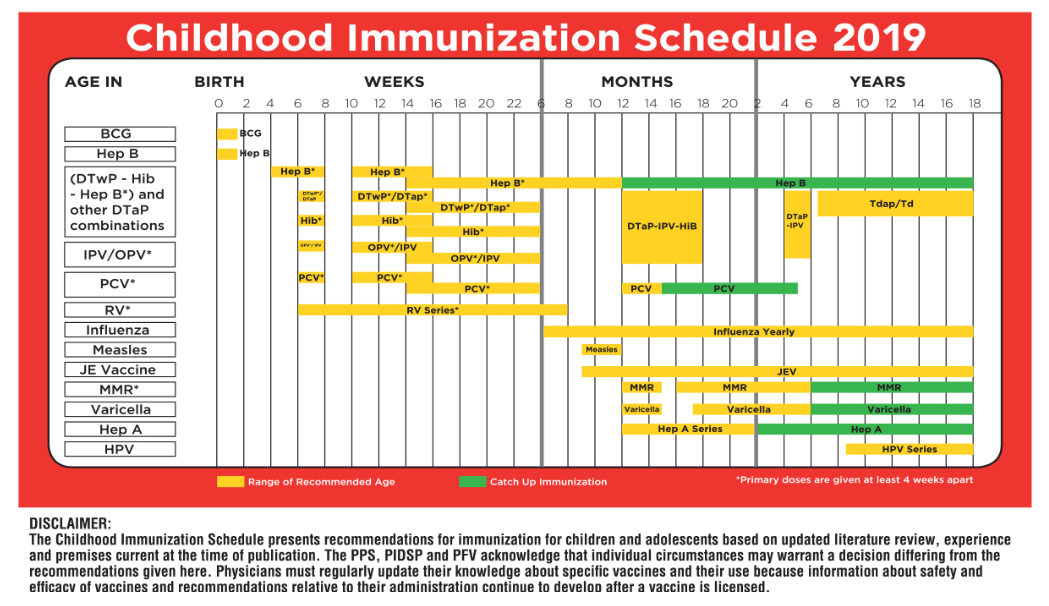How to determine due date with irregular periods
How to Calculate Your Due Date
Pregnancy lasts an average of 280 days (40 weeks) from the first day of your last menstrual period (LMP). The first day of your LMP is considered day one of pregnancy, even though you probably didn’t conceive until about two weeks later (fetal development lags two weeks behind your pregnancy dates).
Read our report on the 13 best pregnancy iPhone and Android apps of the year here.
Calculating your due date isn’t an exact science. Very few women actually deliver on their due date, so, while it’s important to have an idea of when your baby will be born, try not to get too attached to the exact date.
If you have regular 28-day menstrual cycles, there are two ways to calculate your due date.
Naegele’s rule
Naegele’s rule involves a simple calculation: Add seven days to the first day of your LMP and then subtract three months.
For example, if your LMP was November 1, 2017:
- Add seven days (November 8, 2017).
- Subtract three months (August 8, 2017).
- Change the year, if necessary (to the year 2018, in this case).
In this example, the due date would be August 8, 2018.
Pregnancy wheel
The other way to calculate your due date is to use a pregnancy wheel. This is the method that most doctors use. It’s very easy to estimate your due date if you have access to a pregnancy wheel.
The first step is locating the date of your LMP on the wheel. When you line up that date with the indicator, the wheel displays your due date.
Remember that the due date is only an estimate of when you will deliver your baby. The chances of actually having your baby on that exact date are very slim.
This is more common than you’d think. Luckily, there are ways to figure out your due date when you can’t remember the first day of your LMP:
- If you know you had your LMP during a particular week, your doctor can estimate your due date accordingly.
- If you have no idea when your last period was, your doctor may order an ultrasound to determine your due date.

Some women have cycles that are consistently longer than the average 28-day cycle. In these cases, a pregnancy wheel can still be used, but some simple calculations are necessary.
The second half of a woman’s menstrual cycle always lasts for 14 days. This is the time from ovulation to the next menstrual period. If your cycle is 35 days long, for example, then you probably ovulated on day 21.
Once you have a general idea of when you ovulated, you can use an adjusted LMP to find your due date with a pregnancy wheel.
For example, if your menstrual cycle is usually 35 days long and the first day of your LMP was November 1:
- Add 21 days (November 22).
- Subtract 14 days to find your adjusted LMP date (November 8).
After you calculate your adjusted LMP date, simply mark it on the pregnancy wheel and then look at the date where the line crosses. That is your estimated due date.
Some pregnancy wheels may allow you to enter the date of conception — which occurs within 72 hours of ovulation — instead of the date of your LMP.
Your doctor may change your due date if your fetus is significantly smaller or larger than the average fetus at your particular stage of pregnancy.
Generally, your doctor orders an ultrasound to determine the gestational age of your baby when there’s a history of irregular periods, when the date of your LMP is uncertain, or when conception occurred despite oral contraceptive use.
An ultrasound allows your doctor to measure the crown-rump length (CRL) — the length of the fetus from one end to the other.
During the first trimester, this measurement provides the most accurate estimation for the age of the baby. Your doctor may change your due date based on the ultrasound measurement.
This is most likely to occur in the first trimester, especially if the date estimated by the ultrasound differs by more than one week from the date estimated by your doctor based on your LMP.
In the second trimester, an ultrasound is less accurate and your doctor probably won’t adjust your date unless the estimates vary by more than two weeks.
The third trimester is the least accurate time to date a pregnancy. Estimates based on an ultrasound can be off by as much as three weeks, so doctors rarely adjust dates during the third trimester.
However, it’s not uncommon for a doctor to perform an ultrasound in the third trimester if they’re thinking about changing your date.
A repeat ultrasound provides valuable information about the growth of the fetus and may reassure you and your doctor that the change in due date is reasonable.
Did you know?Ultrasound measurements for estimating the age of a fetus are more accurate during the early stages of pregnancy. In the first few weeks, fetuses tend to develop at the same rate. However, as pregnancy progresses, the rates of fetal growth begin to vary from pregnancy to pregnancy.
This is why ultrasound measurements can’t be used to accurately predict the age of the baby in the later stages of pregnancy.
Ultrasounds are not a necessary part of prenatal care. Avoid numerous scansTrusted Source and have ultrasounds for medical reasons only.
Avoid numerous scansTrusted Source and have ultrasounds for medical reasons only.
When a doctor performs an ultrasound, they write a report on the findings and include two estimated due dates. The first date is calculated using the date of the LMP. The second date is based on the ultrasound measurements. These dates are rarely the same.
When your doctor evaluates the ultrasound results, they’ll determine whether or not these dates are in agreement. Your doctor probably won’t change your due date unless its significantly different from your ultrasound date.
If you have more ultrasounds, each ultrasound report will contain a new due date based on the most recent measurements. An expected due date shouldn’t be changed based on measurements from a second- or third-trimester ultrasound.
Due date estimations are more accurate earlier in pregnancy. Later ultrasounds are helpful in determining whether the fetus is growing well but not for determining the age of the fetus.
Learn more about how your body changes during your pregnancy.
- ACOG reinvents the pregnancy wheel: Launches new due date app. (2016). https://www.acog.org/About-ACOG/News-Room/News-Releases/2016/ACOG-Reinvents-the-Pregnancy-Wheel
- Avoid fetal “keepsake” images, heartbeat monitors. (2014). https://www.fda.gov/ForConsumers/ConsumerUpdates/ucm095508.htmTrusted Source
- Calculating a due date. (n.d.). http://www.hopkinsmedicine.org/healthlibrary/conditions/pregnancy_and_childbirth/calculating_a_due_date_85,P01209/
- Calculating your estimated due date. (2014). https://my.clevelandclinic.org/health/diseases_conditions/hic_Am_I_Pregnant/hic_Calculating_Your_Estimated_Due_Date
- Due date calculator. (n.d.). http://www.marchofdimes.org/pregnancy/calculating-your-due-date.aspx
- Pregnancy due date and gestational age calculator. (n.d.). http://www.perinatology.com/calculators/Due-Date.htm
Working out your due date
Working out your due date | Pregnancy Birth and Baby beginning of content7-minute read
Listen
Key facts
- You can calculate your estimated due date based on the date of the first day of your last menstrual period or with ultrasound (LMP).

- Your due date is an estimation of when your baby may be born.
- The average length of a pregnancy is generally about 40 weeks. Although babies are usually born between 37 and 42 weeks of pregnancy.
- It is important to have an accurate due date so that you and your healthcare team can monitor your pregnancy and baby’s growth and to help keep you and your baby safe.
- When you have your first appointment with your doctor or midwife, they will help you work out your due date.
How can I work out my due date?
After finding out you're pregnant, you will want to know how pregnant you are and when your baby is likely to be born. This can be done by working out your estimated due date.
You can calculate your baby’s estimated due date based on the date of the first day of your last menstrual period (LMP). Your baby will be ‘due’ around 40 weeks after the first day of your LMP. This method is particularly accurate if you have a regular menstrual cycle. For example, if you have a regular 28-day cycle, add 7 days to the date of the first day of your last period, then add 9 months.
For example, if you have a regular 28-day cycle, add 7 days to the date of the first day of your last period, then add 9 months.
If your cycle is longer or shorter than 28 days or irregular, working out your due date using the first day of your LMP can be more difficult and may also be more unreliable.
Another way your due date can be calculated is by using ultrasound. By measuring your baby’s size, doctors can work out how far along your pregnancy is. In early pregnancy (usually before 13 weeks) your doctor will measure the length from your baby’s head to your baby’s bottom. This is called the crown-rump length or CRL. Later in pregnancy, your doctor can measure different parts of your baby’s body, including your baby’s head, thigh bone and abdomen to work out an average size and an estimated due date.
Ultrasounds, particularly those done in your first trimester, are generally very accurate at dating your pregnancy, but sometimes there can be a difference in the due date when comparing LMP and ultrasound dates. If this happens to you, your doctor or midwife will explain which is most accurate according to your individual circumstance.
If this happens to you, your doctor or midwife will explain which is most accurate according to your individual circumstance.
It's important to understand that your due date is only an estimate. The exact timing of your baby’s birth is unpredictable. Babies are considered ‘term’ and are usually born anywhere between 37 and 42 weeks of pregnancy. Only about 4 out of every 100 babies are born on their actual due date.
How does my menstrual cycle affect my due date?
The average menstrual cycle is around 28 days. However, the length of a menstrual cycle differs between people. Your menstrual cycle may be as short as 21 days or be as long as 35 days. If your menstrual cycle is longer, this means you ovulated later in your cycle and that your estimated due date will be later. If your menstrual period is shorter, this means that you ovulated earlier in your cycle and that your estimated due date will be earlier.
If you have an irregular cycle, meaning sometimes your menstrual cycle could be 28 days and other times 35 days, for example, it can be more difficult to accurately estimate your due date base on your LMP.
Why is it important to have an accurate due date?
It is important to have an accurate due date so that you and your chosen healthcare team can monitor your pregnancy appropriately and keep you and your baby safe. When you give birth to your baby it is important to know how far along you are in your pregnancy. Your doctors need to know whether your baby is being born early, on time or late.
If you go into labour early, it is important for your medical team to be prepared for various complications that can occur with prematurity. Your healthcare team may need to prepare to transfer your baby to a special care unit or NICU. If, on the other hand, you are overdue, your doctor or midwife may recommend you induce your labour (begin your labour) to prevent complications that can occur with being overdue. This will be done in consultation with you, taking into consideration your birthing preferences.
Can my due date change?
If you have a regular menstrual cycle and have used this to work out your due date, or if you have had an early dating ultrasound your estimated due date is unlikely to change later in pregnancy.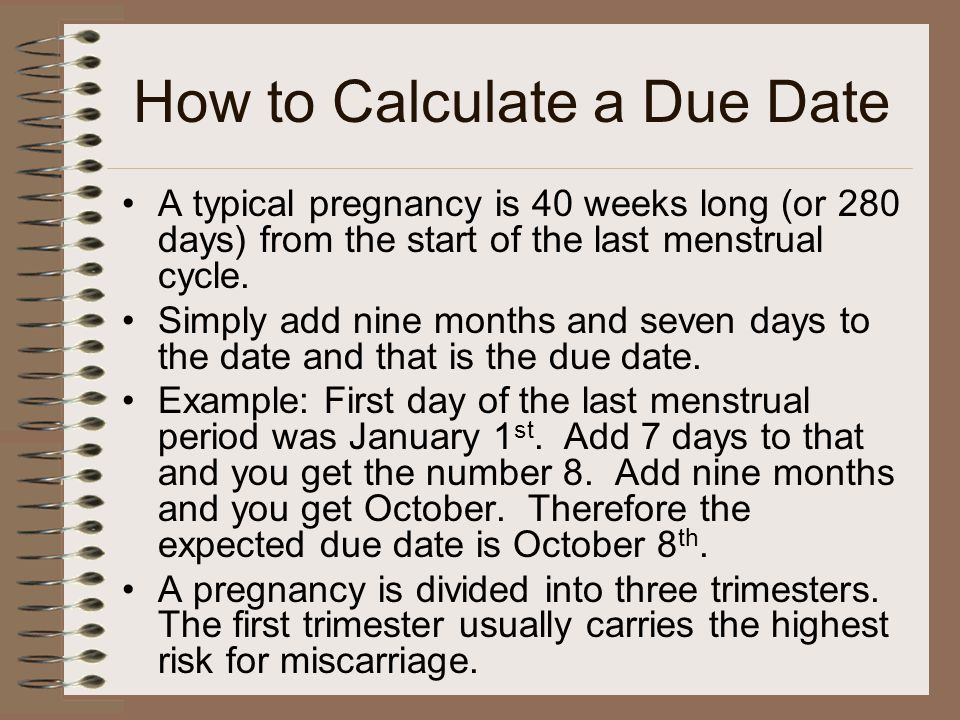 Ultrasounds done later in pregnancy are not as accurate at dating your pregnancy due to variations in babies’ growth and development. For this reason, your due date calculated earlier in pregnancy will be most accurate and is unlikely to change.
Ultrasounds done later in pregnancy are not as accurate at dating your pregnancy due to variations in babies’ growth and development. For this reason, your due date calculated earlier in pregnancy will be most accurate and is unlikely to change.
If you haven’t had an early dating ultrasound, a second or third trimester ultrasound can be used to date your pregnancy.
If your due date has been changed, speak to your doctor or midwife to understand why.
When should I see my doctor?
Usually, you can work out your due date without seeing a doctor. Choosing to have an early dating scan, although recommended, is your choice.
However, there are a few situations when having an ultrasound scan early in pregnancy may be strongly recommended. You should see a doctor if you:
- have a very long or irregular menstrual cycle or don’t know your LMP
- became pregnant while taking the oral contraceptive pill
- have any bleeding during your pregnancy
- have a medical condition or illness that could affect your pregnancy
- have had a previous miscarriage or ectopic pregnancy
Resources and support
Use the Pregnancy, Birth and Baby calculator to estimate your due date.
Speak to a maternal child health nurse
Call Pregnancy, Birth and Baby to speak to a maternal child health nurse on 1800 882 436 or video call. Available 7am to midnight (AET), 7 days a week.
Sources:
Royal Women's Hospital Melbourne (About periods), Queensland Government (Queensland Clinical Guidelines; Preterm labour and birth), Queensland Government (When complications occur), Australian Government Department of Health and Aged Car (Gestational age), New South Wales Government, (Fact sheet- Ultrasound in early pregnancy (before 12 weeks) – Dating scan)Learn more here about the development and quality assurance of healthdirect content.
Last reviewed: September 2022
Back To Top
Related pages
- Ovulation signs
- Early signs of pregnancy
- Antenatal care during your pregnancy
- Due date calculator
Need more information?
Baby due date - Better Health Channel
Pregnancy is calculated from the first day of your last period, not from the date of conception.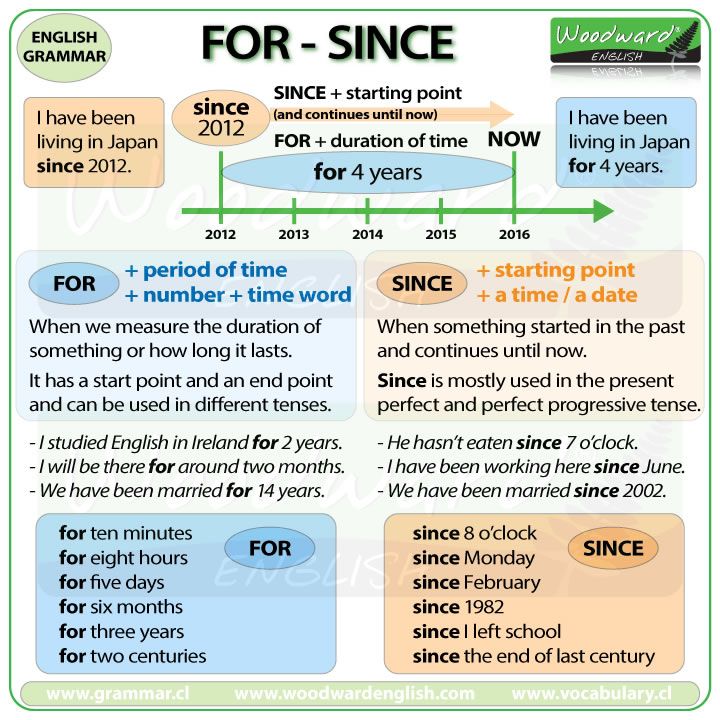
Read more on Better Health Channel website
Induced labour
Induced labour is a medical treatment to start labour. It may be recommended if your baby needs to be born before labour is due to start naturally.
Read more on Pregnancy, Birth & Baby website
Stretch and sweep
A stretch and sweep or membrane sweep is a relatively gentle way of trying to start labour.
Read more on Pregnancy, Birth & Baby website
Overdue babies - Better Health Channel
Only about five per cent of pregnant women actually give birth on the exact date they are due.
Read more on Better Health Channel website
Overdue
Pregnancy normally lasts about 40 weeks or around 280 days from the first day of your last period, however some women go overdue.
Read more on Pregnancy, Birth & Baby website
Glossary of pregnancy and labour
Glossary of common terms and abbreviations used in pregnancy and labour.
Read more on Pregnancy, Birth & Baby website
Pain relief during labour
Learn what options are available to you to relieve pain during labour pain, and how your birth support partner can help you.
Read more on Pregnancy, Birth & Baby website
Pregnancy at week 40
Your baby will arrive very soon – if it hasn't already. Babies are rarely born on their due date and many go past 40 weeks.
Read more on Pregnancy, Birth & Baby website
Baby checklist- packing for hospital
Pregnant women often wonder what to pack for the hospital for the newborn. As your due date approaches, pack a hospital bag so that you’re prepared if labour pains and birth arrive a bit early. The packing for hospital checklist will give you plenty of ideas.
As your due date approaches, pack a hospital bag so that you’re prepared if labour pains and birth arrive a bit early. The packing for hospital checklist will give you plenty of ideas.
Read more on Parenthub website
Going to hospital or birthing centre
Whether you're planning to have your baby at home, in hospital or at a midwifery-led birth centre, you should get a few things ready at least two weeks before your due date.
Read more on Pregnancy, Birth & Baby website
Disclaimer
Pregnancy, Birth and Baby is not responsible for the content and advertising on the external website you are now entering.
OKNeed further advice or guidance from our maternal child health nurses?
1800 882 436
Video call
- Contact us
- About us
- A-Z topics
- Symptom Checker
- Service Finder
- Subscribe to newsletters
- Sign in
- Linking to us
- Information partners
- Terms of use
- Privacy
Pregnancy, Birth and Baby is funded by the Australian Government and operated by Healthdirect Australia.
Pregnancy, Birth and Baby’s information and advice are developed and managed within a rigorous clinical governance framework.
This site is protected by reCAPTCHA and the Google Privacy Policy and Terms of Service apply.
Healthdirect Australia acknowledges the Traditional Owners of Country throughout Australia and their continuing connection to land, sea and community. We pay our respects to the Traditional Owners and to Elders both past and present.
This information is for your general information and use only and is not intended to be used as medical advice and should not be used to diagnose, treat, cure or prevent any medical condition, nor should it be used for therapeutic purposes.
The information is not a substitute for independent professional advice and should not be used as an alternative to professional health care. If you have a particular medical problem, please consult a healthcare professional.
If you have a particular medical problem, please consult a healthcare professional.
Except as permitted under the Copyright Act 1968, this publication or any part of it may not be reproduced, altered, adapted, stored and/or distributed in any form or by any means without the prior written permission of Healthdirect Australia.
Support this browser is being discontinued for Pregnancy, Birth and Baby
Support for this browser is being discontinued for this site
- Internet Explorer 11 and lower
We currently support Microsoft Edge, Chrome, Firefox and Safari. For more information, please visit the links below:
- Chrome by Google
- Firefox by Mozilla
- Microsoft Edge
- Safari by Apple
You are welcome to continue browsing this site with this browser. Some features, tools or interaction may not work correctly.
How to determine the gestational age and due date
| From the first day of your last period you entered a new cycle of fertility, and a new egg began to mature in the ovary - the one that gave rise to a new life. | Pregnancy period |
| But the conception of a new person occurred only when the mature egg | Pregnancy term |
Obstetricians calculate the expected date of delivery (ED) based on the fact that the duration of pregnancy is 10 lunar months, or 280 days from the first day of the last menstruation .
Calculating EDD is very simple : Add nine months and one week to your last menstrual period.
For example, the date of the last menstrual period is May 1, 2009.
Calculation of obstetric EDD: May 1, 2009years + 9 months = February 1, 2010 + 1 week = February 8, 2010.
The average duration of pregnancy from the date of conception is 266 days.
To determine the EDD most accurately, you need to know the date of conception, or at least ovulation. If you absolutely know the date of conception, add 266 days to it, and you will get the estimated date of birth of your child.
How to calculate the day of ovulation?
The day of ovulation depends on the length of the menstrual cycle.
Menstrual cycle - the time interval from the first day of the previous menstruation to the first day of the next one.
The day of ovulation (with a small error) can be calculated if 14 days are subtracted from the total cycle duration (this is the duration of the second phase of the cycle).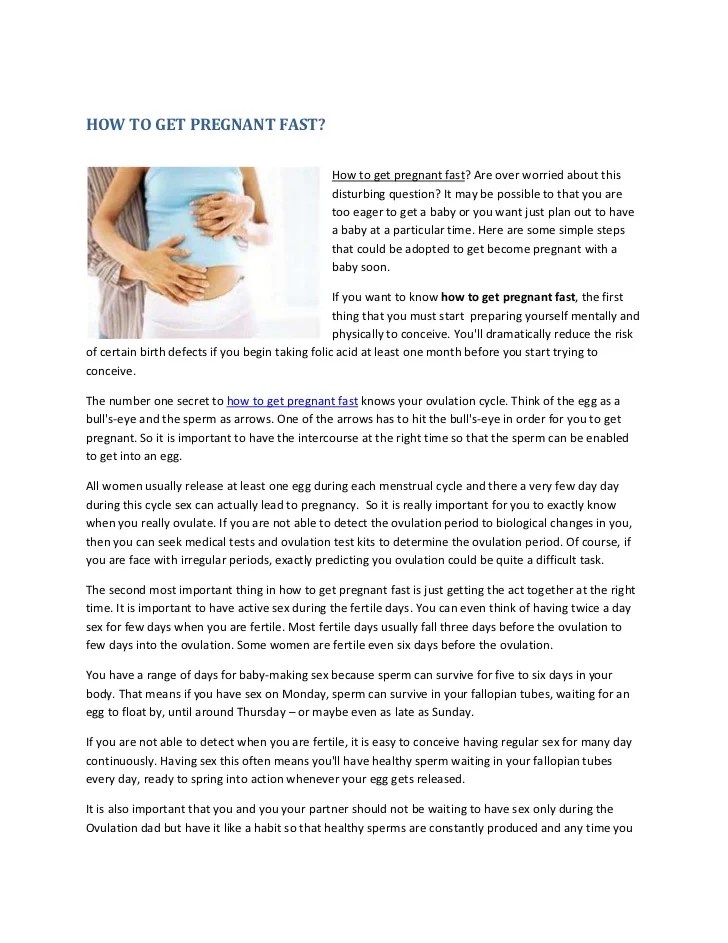
For example, if the duration of the menstrual cycle is 28 days , then ovulation occurs on the 14th day of the cycle. In this case, the obstetric gestational age differs from the actual one by 2 weeks. That is, 40 weeks (280 days) of the obstetric period will correspond to 38 weeks of the actual gestational age (266 days). nine0009 And in this case, the DA for both terms will coincide.
But if the duration of the cycle is 34-35 days , then ovulation occurred on the 20-21st day of the cycle, and the obstetric gestational age differs from the actual period by 3 weeks.
This means that the actual date of delivery will be a week later than calculated by obstetricians.
If the duration of the menstrual cycle is 21 days , then ovulation occurs on the 7th-8th day of the cycle, and the difference between the obstetric period and the actual one will be only 1 week. nine0009 And the actual due date will be a week ahead of the due date calculated by the obstetricians.
If the menstrual cycle is irregular , and its duration varies widely, then the determination of the gestational age and date of delivery presents significant difficulties, and the help of auxiliary examination methods (gynecological examination in early pregnancy, ultrasound) is especially important here.
The accuracy of the ultrasound method depends on the time it is carried out .
In the first trimester, the error in the age of the child can be several days.
In the period from 16 to 20 weeks, the error increases to 7-10 days.
In the third trimester, the gestational age according to ultrasound may differ from the real one by 3 weeks (the gestational age according to ultrasound is determined based on measuring the size of the child, and they, you know, can vary greatly from different parents).
If you don't know your conception date, calculate your EDD based on your last menstrual period, taking into account the length of your menstrual cycle. nine0010
nine0010
Here's how to do it if your periods are regular
| Action sequence | Example : PM June 12, 2009, |
| Add one year to the date of the last menstrual period | June 12, 2010 |
| Subtract three months from this date | March 12, 2010 |
| Add seven days. You will receive an obstetric due date (ODD). | March 19, 2010 |
| Subtract 28 from your cycle time. | 33-28 = 5 days |
| Add the resulting number to the estimated date of delivery. | March 24, 2010 |
What if the menstrual cycles are irregular?
| Action sequence | Example : PM June 12, 2009, 3 last menstrual cycles: 33, 29, 36 days |
| Add one year to the date of the last menstrual period | June 12, 2010 |
| Subtract three months from this date | March 12, 2010 |
| Add 7 days. You will receive an obstetric due date | March 19, 2010 |
| Calculate the arithmetic mean of the last three cycles. | 34+31+37 = 102; 102:3=34 |
| Subtract 28 from the resulting number. | 34-28=6 |
| Add the resulting number to the estimated date of delivery. | March 25, 2010 |
Do not forget that these calculations are approximate, because. Only 5% of children are born at their due date. Most women give birth within ±2 weeks of their due date. This is because children in utero, as well as after birth, grow and mature at different rates. nine0010
Therefore, we advise you not to give the exact date to the question of relatives and friends about the time of the upcoming birth, but to answer more vaguely (for example, at the end of June), pushing back the due date for one or two weeks.
How to determine the gestational age | Center for Fetal Medicine at Chistye Prudy
- Methods for determining the duration of pregnancy
- Embryonic term
- Obstetric term
- By last menstrual period
- By ovulation date or conception date
- According to the size of the uterus
- Ultrasound
- According to the level of hCG in the blood
- According to the first movement of the fetus
Here is a pregnancy test showed the cherished two strips, the expectant mother is in a hurry to register in the antenatal clinic.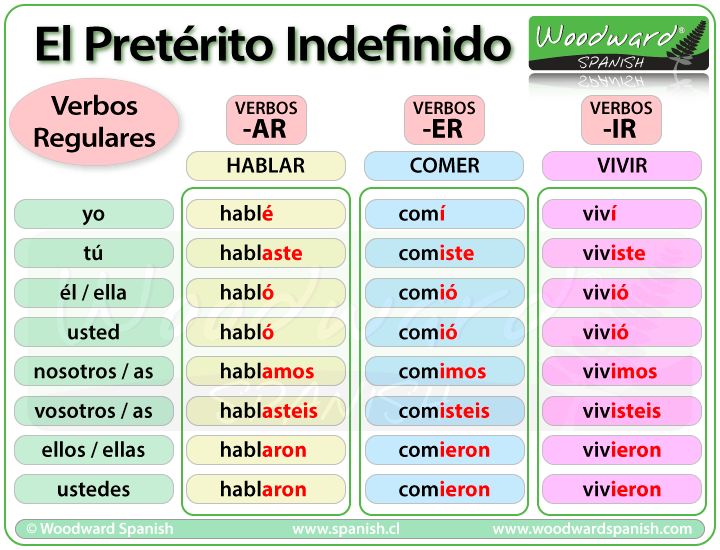 The first thing that an obstetrician-gynecologist determines when registering is the gestational age. This indicator is extremely important in order to understand whether the pregnancy is proceeding correctly and the baby is developing, when it is necessary to take tests and undergo additional examinations, when to go on maternity leave and wait for the baby to be born. nine0010
The first thing that an obstetrician-gynecologist determines when registering is the gestational age. This indicator is extremely important in order to understand whether the pregnancy is proceeding correctly and the baby is developing, when it is necessary to take tests and undergo additional examinations, when to go on maternity leave and wait for the baby to be born. nine0010
It is also very important to know the exact gestational age for screening for the presence of genetic abnormalities in the fetus (ultrasound and blood tests), since these examinations are carried out strictly at certain times of pregnancy.
Learn more about the services:
- 1st trimester ultrasound
- Reception and consultation with a gynecologist
Turning to an obstetrician-gynecologist, many expectant mothers begin to worry about the difference in terms of pregnancy - what the doctor calculated and the woman herself. In order not to worry in vain, you need to know that there are 2 stages of pregnancy - obstetric and embryonic. nine0010
nine0010
Fetal term
This is the true gestational age from conception, it usually lags behind the obstetric term by about 2 weeks.
Obstetric period
Doctors determine it from the first day of the last menstruation before pregnancy. It should be remembered that all doctors use only the obstetric term, all test results, the size of the fetus, the timing of examinations, maternity leave and the term of delivery are calculated taking into account only the obstetric term of pregnancy. nine0010
There are several ways to determine the gestational age.
Determining the gestational age by the date of the last menstrual period
This is the most common way to calculate the gestational age. However, it can only be used if a woman's menstruation comes regularly at the same interval.
It is not always possible to accurately calculate the gestational age based only on the date of the last menstrual period. This happens in cases where a woman has irregular menstruation or in those patients who have a regular but long menstrual cycle. For example, if a woman has a typical cycle length of 35 days (and not 26 - 28, like most women), then most likely she will only be able to conceive on about the 21st day of the cycle (and not on the 14th, as on a 28 day cycle). Accordingly, the period calculated by menstruation will exceed the “real” obstetric gestational age by a week. nine0010
For example, if a woman has a typical cycle length of 35 days (and not 26 - 28, like most women), then most likely she will only be able to conceive on about the 21st day of the cycle (and not on the 14th, as on a 28 day cycle). Accordingly, the period calculated by menstruation will exceed the “real” obstetric gestational age by a week. nine0010
According to the date of ovulation or the date of conception
If the date of conception is known, two weeks must be added to this date - we will get the obstetric gestational age. However, it must be remembered that even if a woman knows exactly the date of ovulation or the date of sexual intercourse, after which pregnancy occurred, this does not mean that she absolutely knows the date of conception.
A spermatozoon that has entered the female body is capable of fertilization within 4-5 days, sometimes even within a week, and a mature egg retains the ability to conceive for 2 days after ovulation. Therefore, even knowing exactly the date of sexual intercourse or ovulation, it is impossible to say with accuracy that fertilization occurred on that day. It could have happened later. Therefore, the period calculated by ovulation or the date of conception cannot be considered completely accurate. nine0010
It could have happened later. Therefore, the period calculated by ovulation or the date of conception cannot be considered completely accurate. nine0010
Doctors calculate the gestational age in a slightly different way in cases where pregnancy has occurred as a result of IVF. In this case, the fertilization of the egg by the spermatozoon is carried out "in vitro" by the embryologist. Embryos develop in the laboratory for 3-5 days, after which they are transferred to the uterus.
Doctors calculate the true duration of pregnancy after IVF from the date of ovarian puncture, that is, the stage of the procedure, when the follicular fluid and the follicles contained in it are taken with a special needle for subsequent fertilization “in vitro”, and to determine the “usual” obstetric period , add 2 weeks in the date of ovarian puncture. nine0010
If the transfer of the embryo to the uterus was preceded by its cryopreservation (that is, freezing in liquid nitrogen), to determine the exact gestational age, doctors add 5 days to the transfer date (this is the number of days the embryo develops before freezing), and to determine the obstetric period, to the received true date add 2 weeks.
According to the size of the uterus
Examining a woman in a gynecological chair, an obstetrician-gynecologist uses both hands to determine the size of the uterus. In this case, you can also determine the approximate gestational age. nine0010
This method is most accurate in early pregnancy, up to about 12 weeks. The earliest period that can be determined by the size of the uterus is 5 weeks of pregnancy. By this time, the uterus is slightly enlarged, softened and becomes rounded. At later dates, the size of the uterus may vary slightly depending on the size of the fetus, the amount of amniotic fluid, and the structure of the woman's pelvis. For example, it is believed that at 16 weeks the bottom of the uterus is located in the middle of the distance between the pubis and the navel, at 24 weeks of pregnancy the bottom of the uterus is at the level of the navel. nine0010
Ultrasound
In the early stages of pregnancy, by measuring the size of the ovum and embryo, the gestational age can be determined with great accuracy.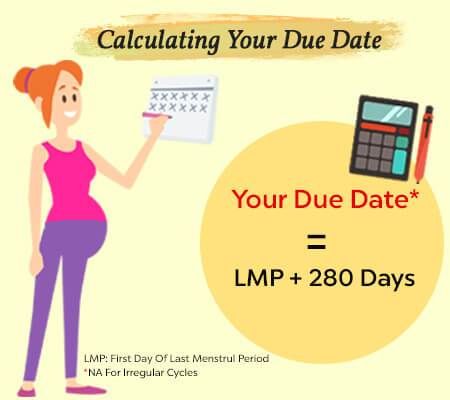
At 4-5 weeks, a small “black circle” is detected in the uterus during ultrasound examination - this is a fetal egg, in which an embryo will appear a little later. At about 6-7 weeks, the embryo appears in the form of a small “stripe” and you can see its heartbeat. More accurate is the period calculated by measuring the KTP of the embryo (KTP is the coccygeal-parietal size, that is, the maximum distance from the head end of the fetus to its tailbone), and not by the diameter of the fetal egg. nine0010
After 12 weeks, the gestational age during ultrasound is determined according to the so-called fetometry, that is, measurements of various sizes of the head and abdomen of the fetus, length of arms, legs, heart sizes, etc. are used to calculate the term.
Up to 9-10 weeks of pregnancy, the embryo grows proportionally, and its size in all women with the same gestational age will be approximately identical. In the future, the size of the fetus will differ in expectant mothers of different nationalities, with different body weights, the weight of the mother and father at birth will matter, and so on. That is, in the later stages of pregnancy, normally developing children of the same term may have different sizes (fluctuations can be about 2 weeks, sometimes more), and in such a situation, it is impossible to reliably determine the gestational age according to ultrasound data. In the later stages, the determination of the gestational age by ultrasound is only clarifying. In addition, the lag in the size of the fetus during ultrasound at long gestations is most often regarded by doctors as a developmental disorder due to the fact that the placenta does not transport oxygen and nutrients well enough. nine0010
That is, in the later stages of pregnancy, normally developing children of the same term may have different sizes (fluctuations can be about 2 weeks, sometimes more), and in such a situation, it is impossible to reliably determine the gestational age according to ultrasound data. In the later stages, the determination of the gestational age by ultrasound is only clarifying. In addition, the lag in the size of the fetus during ultrasound at long gestations is most often regarded by doctors as a developmental disorder due to the fact that the placenta does not transport oxygen and nutrients well enough. nine0010
At the Fetal Medicine Center in Moscow, all types of ultrasound during pregnancy are performed at an expert level, including ultrasound in early pregnancy.
Our center is organized in such a way that the whole range of services is concentrated in one place, where a woman receives the results of various types of research, including ultrasound, biochemical, and specialist consultation within 1-1. 5 hours.
5 hours.
According to the level of hCG in the blood
HCG (human chorionic gonadotropin) is a hormone that is released during pregnancy by the placenta. It begins to be produced with the onset of pregnancy, gradually its amount increases, until about the 11th week of pregnancy, and then begins to decrease slightly. nine0010
Determining the concentration of hCG in the blood in the early stages of pregnancy helps to accurately determine the period. Having received the results of a blood test for hCG, it is worth paying attention that in the laboratory tables of the correspondence of the hormone level to the gestational age, the embryonic period is often indicated, that is, to determine the usual obstetric gestational age, 2 weeks should be added to the result.
Recently, tests have appeared to determine the duration of pregnancy by urine. They also determine the concentration of the hCG hormone in the urine of a pregnant woman and, in addition to confirming the very fact of pregnancy, show what period the hormone content corresponds to. The only thing to remember is that urine tests also show the fetal gestational age. nine0010
The only thing to remember is that urine tests also show the fetal gestational age. nine0010
The Fetal Medicine Center performs all types of tests for pregnant women.
Determining the term of pregnancy by the first movement of the fetus
This method of determining the term has recently been used less and less. It is based on the fact that nulliparous women begin to feel the first movements of the baby at 20 weeks of gestation, multiparous women a little earlier - at 18 weeks. That is why obstetrician-gynecologists recommend that a woman remember the date of the first movement of the fetus and enter this data into the exchange card. nine0010
However, this method of determining gestational age is often erroneous.
A mother who is expecting her first child, indeed, most often begins to feel the movements of the fetus a little later than a multiparous woman. This is due to the fact that "experienced" mothers know how the movements of the crumbs are felt at first and what they should feel.

